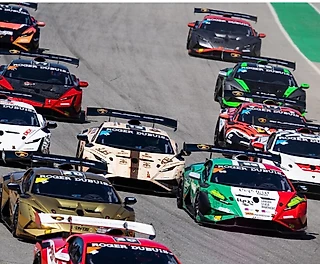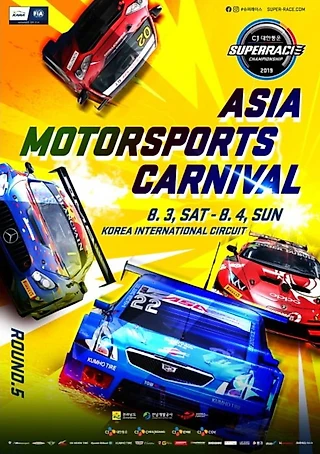United States Grand Prix Insights
Взгляд редактора ESPN на новую трассу (2012) и немного о финансовом аспекте организации ГП США, открывающемся 15-17 ноября в Остине, штат Техас.
Reborn in the USA
Laurence Edmondson at COTA.
November 16, 2012
Roughly 20 miles west of the Circuit of the Americas is the small and unassuming Buda Grocery and Grill. Walk in through the saloon doors and past the soda fountain and you'll find a no-nonsense menu selling burgers, wings, nachos and a small selection of salads. Painted on the wall in large letters is the slogan: "Buda Grocery and Grill: Gently resisting change since 1913".
Buda, a small town off Interstate 35 known for its love of wiener dog racing, is not a place where you would expect to find the locals embracing the fast-pace world of Formula One. Yet on Thursday evening the conversation in the Grocery and Grill briefly turned to the grand prix and its travelling circus.

"You expecting a big crowd in the Grill over the weekend with the Formula One racing and all?" A customer asks the proprietor.
"Hell, I don't know," says the owner, "it's the first year and all ... but everybody's expecting."
"You said it," comes the response from across the counter, "everybody's expecting."
The ten second exchange neatly sums up five hours of media briefings in the paddock earlier in the day. The truth is no-one knows what will happen over the weekend. Will the crowds flock to fill the grandstands? Will there be a pile up on the blind apex of turn one? And will Sebastian Vettel ride off into the sunset with a third world title? No-one knows, but everybody's expecting.
The early signs, however, are good. The circuit has been finished to a very high standard, a full house of 120,000 has been predicted on race day and the ascent to turn one is every bit as steep as it looks in the photos. Not since F1 last raced at Watkins Glen in 1980 has the sport had a proper circuit in the USA to call home, but this could well be it. The likes of Long Beach, Detroit and Dallas all held their place for a while, but more often than not F1 is better suited to purpose-built race tracks than street circuits, and Austin is very much purpose-built.
Indianapolis saw big crowds in its first few years, but it was a marriage of convenience with an existing circuit. The tight and twisty infield was not conducive to exciting racing and having only six cars competing in 2005 did nothing to help the fragile relationship. The Circuit of the Americas, however, has corners designed with F1 racing in mind and should provide the wow factor which is so desperately needed while trying to appeal to the American audience.
"Indy was an interesting circuit but it wasn't built for us, it was built for IndyCar and NASCAR," Jenson Button explains. "For us, we need more high-speed corners to show off what an F1 car is capable of. So going through turns two to eight [at the Circuit of the Americas] it should be spectacular because of the change in direction. If you're sitting there watching you should see a car on the edge and it's very special to see that because you don't see it at many places.

"After that you drop down into a hairpin and go along a straight that goes over the brow of a hill, which is always nice. Hills for some reason really help in F1 for overtaking and with the DRS that should hopefully be a good spot for overtaking into the next corner. Then you've got a bunch of slow corners that will be tricky to overtake in but I think someone will try to throw it up the inside there."
And it's not just Button that likes the Circuit of the Americas. The 3.41-mile track was praised by the majority of the drivers following their Thursday morning track walks and has the potential to be on a par with best Tilkedrome of all, Istanbul Park. But even if you build a fantastic circuit, it's no guarantee that the fans will come ... especially as this weekend's race clashes with the final round of the NASCAR Sprint Cup in Miami.
"I think in the future we have to take those things into consideration," Mercedes team principal Ross Brawn admits. "When we look at the Formula One grand prix calendar, we look at the bike racing fraternity and all the other formulae and everyone tries to fit around one another. And no doubt as we become more established in North America those things will be taken into consideration."
Despite the NASCAR gaffe, F1 is not underestimating the challenge of bringing the sport back to the USA. The likes of Mercedes desperately want to further their brand exposure in the American market and they can see the potential to do that through the grand prix.
"The first year you come to a race facility like this it's fantastic to see the level of support, but maintaining that support will be a measure of our success of racing in America," Brawn added. "There are things that we do during a season to monitor exposure and monitor reaction, and America for us as a company is our biggest market. Mercedes is probably going to sell over 300,000 cars here this year.
"But I think it will take some time to build [the support], it's not somewhere we can just walk in to and expect our American audience to be immediately switched on and understand everything. We want to spend time developing the audience, but the fact the race is a sell-out shows the core enthusiasm that there is in America for Formula One and we need to expand that enthusiasm."
The building blocks are in place for Formula One to achieve its American dream and with budgets getting tighter up and down the grid it needs the US market far more than the US needs it. Now it's time for F1 to deliver where it really matters: on the track. After all, everybody's expecting.
Laurence Edmondson is deputy editor of ESPNF1.

And here is some analysis of financial aspects of US GP by ESPN staff - looks like it's more popular than expected by anyone:
US Grand Prix a commercial success ESPN Staff
March 15, 2013
The city of Austin gained global media coverage worth $191.2 million from hosting the 2012 United States Grand Prix, according to new research by Formula One industry monitor Formulamoney.
This comprised $166.7 million in exposure generated verbally and visually through television broadcasts and a further $24.4 million through mentions of Austin and F1 in print and major online media. The report said that the grand prix also gained exposure for associated advertisers of $150 million, ranking it as the best race of 2012 in terms of brand exposure.
The best-exposed sponsor of the race was series tyre supplier, Pirelli, which in the absence of a race title sponsor took several prime trackside advertising slots for the event resulting in total exposure worth $24.5 million.
The United States Grand Prix also performed well in terms of spectator attendance, attracting the second-biggest race-day crowd, its 117,429 fans placing it second to only to the British Grand Prix at Silverstone where 127,000 people paid to watch. Austin also scored the third-highest three-day attendance of 2012, with 265,499 fans putting it behind only Britain and Canada.
Source: © ESPN Sports Media Ltd.




